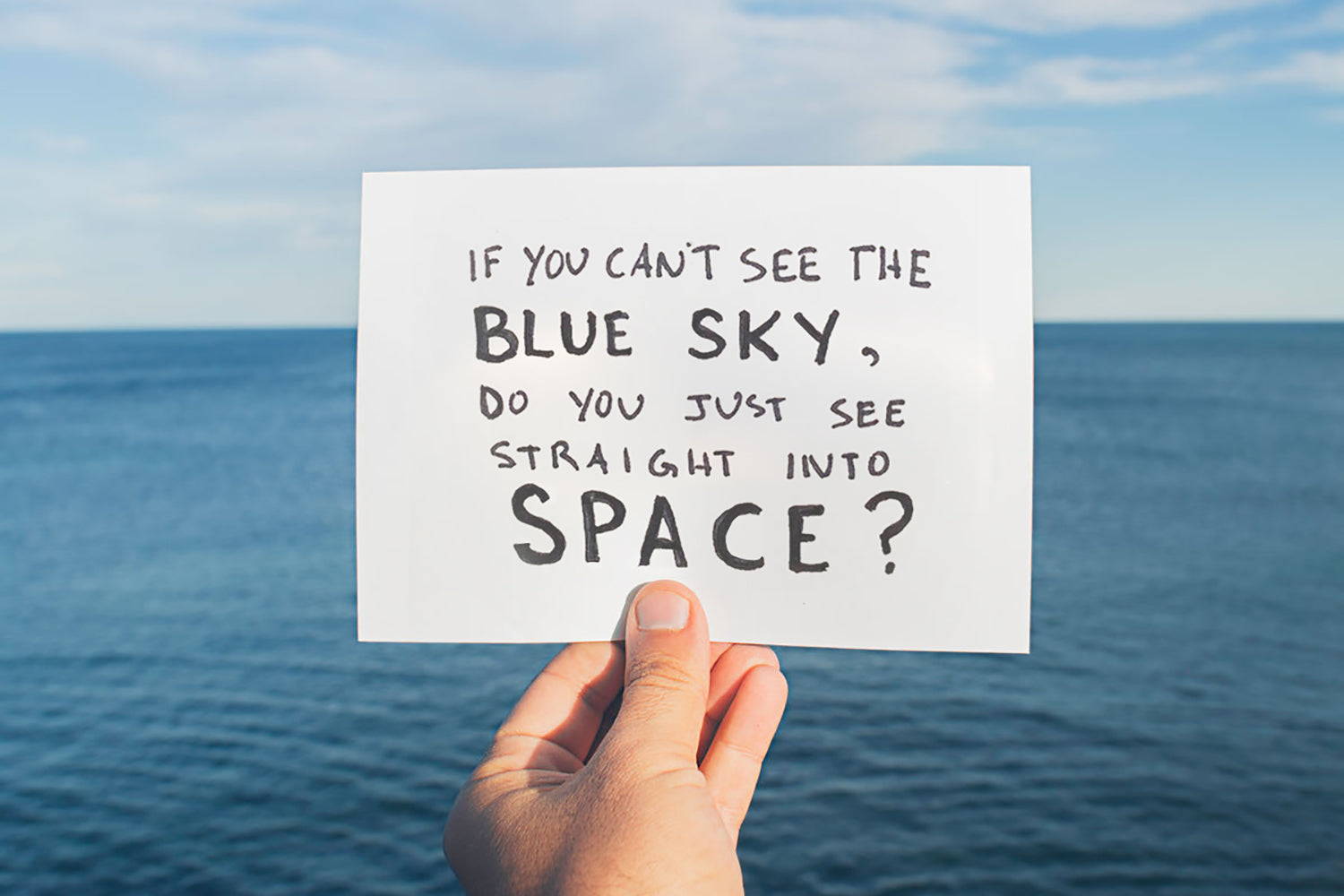The world of colour vision is full of intricacies and interesting facts. At EnChroma, we want you to know everything there is to know about being colour blind. So here’s a list of some of the most fun facts we know about colour blindness.
Genetics of Colour Blindness
1. It’s estimated that there are 300 million colour blind people in the world!
2. Colour blindness is more common than you might think! 1 in 12 men is colour blind while only 1 in 200 women have the condition. This means that 95% of the colour blind community are men. 98% of those with colour blindness have red-green colour blindness.
3. Red-green colour blindness is passed down through the mother on the X-chromosome. However, there are different ways the “colour blindness gene” can show up!
4. Red-green colour blindness is common name for the two most common types called Deutan and Protan. It is given this name since red and green are the two colours that are typically most difficult to distinguish by colour blind individuals with either of these conditions.
5. Red-green colour blindness is caused by a defect in a person’s light-sensitive cone cells. The green-sensing M cone and the red-sensing L cone’s sensitivities overlap more than they would in a normally-sighted person’s eyes, which creates colour confusion across the spectrum.
6. Babies are born colour blind! As they grow, their colour vision improves and is typically fully developed by the age of 6 months.
7. It’s possible to be colour blind in one eye and have normal colour vision in the other. This is called unilateral dichromacy and it’s very rare.¹
8. John Dalton, a scientist, wrote the first paper on colour blindness in 1794. He believed his own colour blindness was caused by a discoloration in his aqueous humor.
9. On the atoll of Pingelap in the Pacific Ocean, 4.9% of the population has achromatopsia or complete colour blindness. In the US, only .0003% of the population has the same condition.²
10. People who are red-green colour blind are often surprised to find out that peanut butter is NOT green!
“It’s possible to be color blind in one eye and have normal color vision in the other. This is called unilateral dichromacy and it’s very rare.”
Animals and Colour Vision
11. The mantis shrimp has 12 types of cone cells, 4 times as many as humans! Scientists aren’t sure why they have such a complex visual system yet, but it is known that the animal can see infrared and ultraviolet light. Learn more about marine animals’ color vision in our blog.
12. Contrary to popular belief, dogs don’t actually see in black and white. They are dichromats, which means they have two types of cone cells, and see in mostly blue and yellow. Their vision is somewhat similar to a color blind human’s color vision. Learn more about our furry friends’ color vision.
13. Peacocks are known for their colorful plume of feathers that are dazzling to humans. However, what’s most important to peacocks is the number of eye-shaped marks on the ends of the feathers. Peacocks see these ‘eyes’ in ultraviolet light, so the more eyes a male peacock has, the more attractive it is as a mate.
Colour Blind Test Facts
14. EnChroma is the #1 online colour vision test used by more than 1 million people worldwide. It is the first test of its kind, designed to identify different types and severity of colour blindness. A properly administered colour blindness test requires that one not wear filtered lenses or glasses, including EnChroma colour blind glasses.
15. The Ishihara colour blind test was invented by Dr. Shinobu Ishihara in 1916 while he held a military position in the Japanese Army. The test was originally developed exclusively for use by the Japanese Army, but became more widespread in 1917.
Colour Blind Problems
Colour blindness can cause some unique problems in a color blind person’s life that occur in everyday situations that non-colour blind people might take for granted. Here’s a list of just some of the issues it can cause:
16. In Romania, people who are colour blind are not allowed to obtain a driver’s license.
17. In some countries, there are barriers to entry in certain professionals for people who are colour blind. In England, colour blindness may prevent you from becoming a doctor; in the US one cannot get a pilot’s license; and in many parts of the world, it’s difficult to become an electrician.³
18. Because colour blind people have a hard time distinguishing between green and yellow, they often have a hard time knowing when a banana is ripe. Many are accustomed to the bitter taste of an unripe banana!
19. People who are color blind often have trouble cooking meat to the proper temperature. Much of the process relies on monitoring the meat’s color and they cannot distinguish between the shades of cooked and uncooked meat.
20. To the normally sighted person, a rainbow features all the colors of the rainbow. For many color blind people, however, a rainbow only appears to have 2 or 3 colors: blue and yellow.
21. To a color blind person, the green light on a stoplight may appear white or even blue, while the red and yellow lights may look similar to each other.
22. Many color blind people struggle to match their black and blue socks and can find themselves a little mismatched from time to time. Read more about what color blind people see.
Famous Colour Blind People
19. People who are colour blind often have trouble cooking meat to the proper temperature. Much of the process relies on monitoring the meat’s colour and they cannot distinguish between the shades of cooked and uncooked meat.
20. To the normally sighted person, a rainbow features all the colours of the rainbow. For many colour blind people, however, a rainbow only appears to have 2 or 3 colours: blue and yellow.
21. To a colour blind person, the green light on a stoplight may appear white or even blue, while the red and yellow lights may look similar to each other.
22. Many colour blind people struggle to match their black and blue socks and can find themselves a little mismatched from time to time.
23. Some of your favorite celebrities may be colour blind! There are many public figures with colour blindness, here’s a list of a few:
- Robert Redford - American actor
- Sting - British musician
- George Clinton - American musician
- Jack Nicklaus - American professional golfer
- Howie Mandel - American entertainer
- Eddie Redmayne - British actor
- Prince William - Prince of England, Duke of Cambridge
- Meat Loaf - American musician
- Mark Zuckerberg - Facebook CEO and founder
- Christopher Nolan - English director
- Fred Rogers - American television actor, host of Mr. Rogers
- Bing Crosby - American musician
- Chris Rogers - Australian cricketer
24. EnChroma colour blind glasses were invented by EnChroma co-founder, Don McPherson, while working as a glass scientist on laser glasses designed for surgeons. The colour blindness aiding properties of the glasses were accidentally discovered during an ultimate frisbee game.
What is an EnChroma Moment?
25. An EnChroma moment is when someone puts on EnChroma colour blind glasses and is profoundly moved by the incredible colour they experience. Watch some EnChroma moments here.
Our Mission
To make a meaningful contribution to the human experience through boundary-breaking colour vision science and technologies.
Colour blindness can be confusing and is often misunderstood. At EnChroma, it’s our aim to help demystify the world of colour vision and show how colour blindness really affects those who have it. If you have a colour blindness fun fact that we may have missed, feel free to share it with us at any of our social links below!
Sources:
Broackes, J. (2010, September). Unilateral colour vision defects and the dimensions of dichromat experience. Retrieved from https://www.ncbi.nlm.nih.gov/pubmed/20883354
Hussels, I. E., & Morton, N. E. (1972, May). Pingelap and Mokil Atolls: Achromatopsia. Retrieved May 23, 2019, from https://www.ncbi.nlm.nih.gov/pmc/articles/PMC1762260/
Spalding, J. A. (1999, June). Colour vision deficiency in the medical profession. Retrieved from https://www.ncbi.nlm.nih.gov/pubmed/10562750



